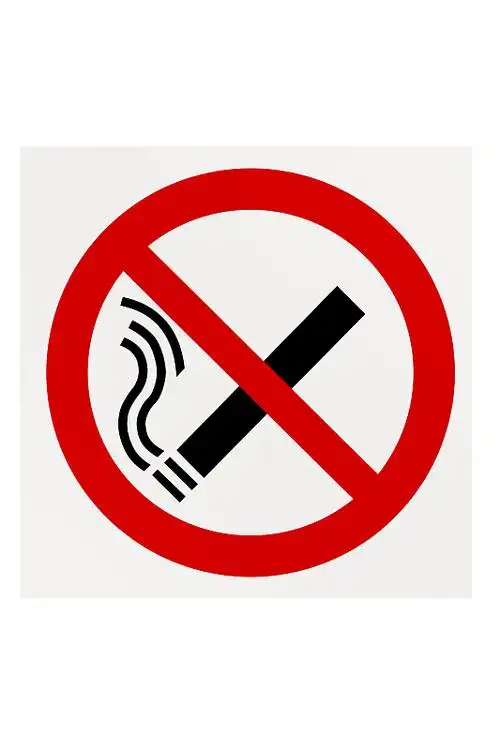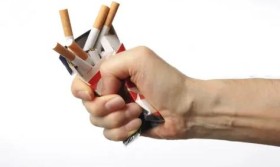The Unseen Complication: How Smoking Compromises Postoperative Wound Healing and Recovery
Every year, millions of people undergo surgery with the hope of improving their health and quality of life. The success of these procedures, however, doesn't rest solely in the surgeon's skilled hands. A critical part of the journey happens after the operation, during the intricate and miraculous process of wound healing. For patients who smoke, this recovery phase faces a significant, often underestimated, adversary. A substantial body of clinical evidence confirms that smoking drastically reduces postoperative wound healing quality, leading to a lower overall healing score and increasing the risk of complications that can jeopardize the surgical outcome.
To understand why smoking is so detrimental, we must first appreciate the elegant ballet of cellular activity that is normal wound repair. Healing is a finely orchestrated process divided into four overlapping phases: hemostasis (stopping the bleeding), inflammation (cleaning the site), proliferation (rebuilding tissue), and maturation (strengthening the scar). This process relies on a rich supply of oxygen and nutrients delivered by blood, a precise inflammatory response, and the coordinated work of cells like fibroblasts and keratinocytes. Smoking interferes with every single one of these stages, creating a hostile environment for repair.
The primary culprit behind smoking's negative impact is a cocktail of over 7,000 chemicals, with nicotine, carbon monoxide, and hydrogen cyanide being the most disruptive to wound healing.
Nicotine: The Vasoconstrictor Nicotine, the addictive substance in tobacco, is a potent vasoconstrictor. It causes blood vessels to narrow, reducing blood flow to the smallest capillaries in the skin and underlying tissues. Imagine the surgical site as a construction zone that desperately needs deliveries of building materials like oxygen, vitamins, and immune cells. Nicotine effectively puts a roadblock on the highway, severely limiting these essential deliveries. This impaired blood perfusion and tissue oxygenation, known as hypoxia, is a direct pathway to poor wound healing outcomes. Without adequate oxygen, fibroblasts cannot produce collagen effectively, and the entire rebuilding process slows to a crawl, fundamentally lowering the potential wound healing quality score.
Carbon Monoxide: The Oxygen Thief While nicotine restricts the delivery trucks, carbon monoxide (CO) sabotages the cargo itself. CO binds to hemoglobin in red blood cells with an affinity over 200 times greater than oxygen. This means that even if blood does manage to reach the wound area, a significant portion of it is carrying useless CO instead of life-sustaining oxygen. This creates a state of functional anemia at the cellular level. Cells tasked with healing are starved of the energy they need to multiply, migrate, and synthesize new tissue. This oxygen deprivation is a key reason why smokers so frequently experience delayed wound healing and weaker scar formation.
The Domino Effect on Healing Phases
The combined assault of nicotine and carbon monoxide sets off a domino effect that disrupts the entire healing cascade.
-
Inflammation Gone Awry: The inflammatory phase, which is meant to be a controlled process for clearing debris and bacteria, becomes dysfunctional. Smoking impairs the function of neutrophils and macrophages—the body's clean-up crew. This leads to a prolonged and less effective inflammatory response. Instead of a swift, efficient cleanup, the site can become bogged down, increasing the risk of infection and delaying the transition to the next healing stage.
-
Collagen Catastrophe: The proliferation phase is where the real construction happens, and collagen is the primary building material. Smoking creates a double whammy for collagen. First, the hypoxia caused by vasoconstriction and carbon monoxide directly reduces collagen synthesis by fibroblasts. Second, tobacco smoke increases the activity of enzymes called matrix metalloproteinases (MMPs) that break down collagen. So, the body is both producing less new collagen and breaking down the existing framework faster. The result is a weaker, less robust extracellular matrix, leading to scars that are more prone to dehiscence (re-opening) and herniation.
-
Impaired Epithelialization: The final surface covering of the wound, epithelialization, is also hindered. The new skin cells (keratinocytes) need a healthy, vascularized wound bed to migrate across. The poor microenvironment in a smoker's wound makes this process sluggish and incomplete, further delaying full closure.

Clinical Consequences: From Theory to Reality
These physiological disruptions translate into tangible, serious clinical problems that directly impact a patient's recovery journey and quality of life. The reduced postoperative wound healing quality score manifests as:
- Increased Risk of Wound Infection: Poor blood flow means fewer immune cells reach the site to fight off invading bacteria. A hypoxic wound is a fertile ground for infections, which can deepen, spread, and require aggressive antibiotic treatment or even further surgery.
- Wound Dehiscence: This is the partial or complete separation of the wound layers. Due to poor collagen deposition and weak tissue strength, the surgical incision is more likely to pull apart, a frightening and serious complication.
- Necrosis and Skin Flap Failure: In procedures involving skin grafts or flaps, the survival of that transplanted tissue depends entirely on the growth of new blood vessels into it. Smoking's vasoconstrictive effects can choke off this vital blood supply, causing the graft or flap to die (necrose). This can be devastating, especially in reconstructive surgeries like after mastectomy or trauma.
- Hypertrophic and Keloid Scarring: The disorganized and inefficient healing process can lead to excessive and unsightly scarring. The fragile balance of collagen production and breakdown is lost, often resulting in raised, red, and sometimes painful scars.
- Delayed Return to Normalcy: All these complications contribute to a longer recovery time, more pain, extended hospital stays, and increased healthcare costs. The emotional and physical toll on the patient is significant.
The Path to a Better Outcome: Preoperative Cessation is Key
The most encouraging news in this challenging scenario is that much of the damage is reversible. The body possesses a remarkable ability to recover from the insults of smoking if given a sufficient smoke-free period. This is where the concept of preoperative smoking cessation to improve surgical outcomes becomes paramount.
Research has shown that even a short period of abstinence can make a substantial difference. Stopping smoking for just 4-8 weeks before surgery allows the cardiovascular system to recover, improves blood flow, and clears carbon monoxide from the bloodstream. This preoperative period significantly enhances tissue perfusion and oxygenation at the time of surgery, providing the wound with the best possible start for healing. Many hospitals now run structured smoking cessation programs for elective surgery patients, offering counseling, nicotine replacement therapy (NRT), and support to help them quit.
For patients who are unable to quit completely, reducing the number of cigarettes can still offer some benefit, but the greatest leap in improving the postoperative wound healing quality score comes from complete cessation. It is one of the most powerful, proactive steps a patient can take to ensure their surgery is as safe and successful as possible.
In conclusion, the link between smoking and compromised wound healing is undeniable and mechanistically clear. From constricting blood vessels and stealing oxygen to disrupting cellular functions and collagen metabolism, smoking creates a perfect storm that undermines the body's innate repair mechanisms. This directly leads to a lower healing score and a higher burden of complications. For anyone contemplating surgery, having an open and honest conversation with their surgeon about smoking is a critical first step. Embracing a smoke-free period before and after the operation is not just a lifestyle recommendation; it is a vital component of the treatment plan, a personal investment in a smoother, safer, and more successful recovery. By choosing to quit, patients actively choose to give their bodies the best possible chance to heal.












